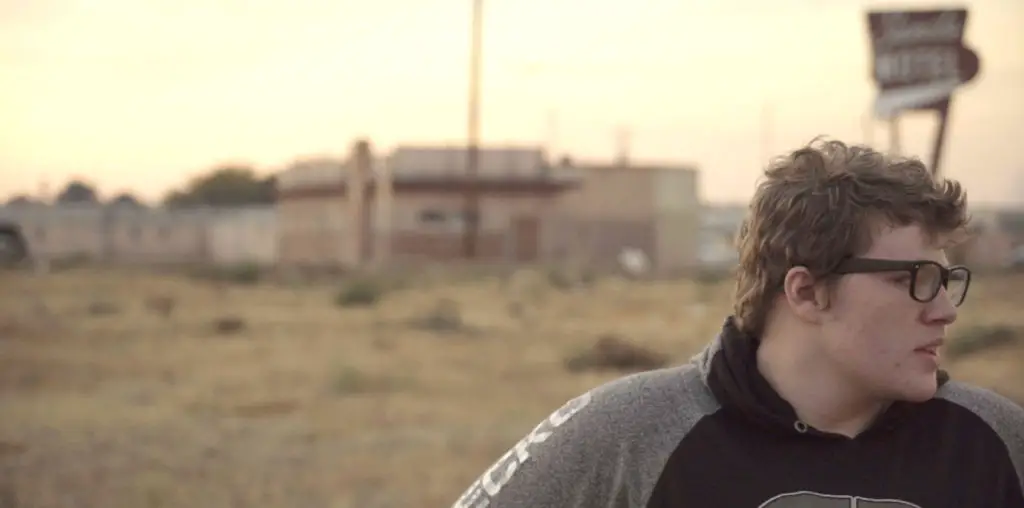
There is no shortage of documentaries about life in prison, but few are as bewildering and goofy as “Lifers.” Begun by a 22-year-old Canadian filmmaker named Sheona McDonald to detail the roots of youth violence, “Lifers” presents the a decidedly unusual portrait of life behind bars in British Columbia. This film is entertaining for all the wrong reasons, and its naive charm floats it when logic dictates it should sink under its own earnest stupidity.
I should prefix this review by stating I have no knowledge (firsthand or otherwise) of the Canadian penal system. Yet the Matsqui Institution presented in “Lifers” seems to be a fairly peculiar prison. For starters, none of the inmates seem to be wearing uniforms. Everyone under lock and key is allowed to wear street clothing, and everyone’s threads are immaculately clean. Even cleaner is the diction of the articulate inmates who received life sentences (though most will be released long before their lives are over). There’s even a Friday evening meeting of the Lifers Group, an orderly and eloquent gathering of men who sit around a long table and hold deep conversations. Except for their tattoos and heavily muscled physiques, one could easily imagine these men as academics in the midst of cerebral debate by the dignity and seriousness in which they act.
Even stranger to “Lifers” is the purpose and plan of filmmaker McDonald, who narrates the film in a sing-song voice which might inspire homicidal actions for viewers with low tolerance levels. Her initial plans on a youth violence film were jettisoned almost immediately, but she continued to keep filming with no clue as to where the production would lead. This go-it-without-a-map approach shows. While this might seem reckless to the sober mind, McDonald happily continued this route for over five years to create this documentary.
To be frank, McDonald comes across as something of a ding-a-ling, making the most inane observations imaginable. When surveying a prison dining hall, she chimes: “Walking through the cafeteria, I felt like I was back in high school.” After interviewing several clean-cut and hunky young inmates (who seem like they belong in Tiger Beat magazine rather than maximum security), McDonald wonders on how their lives took such a wrong turn and exclaims: “I was looking to make sense of it all.” Three-quarters of the way through the film, McDonald confesses such confusion at her findings that she goes back to track down the various inmates she interviewed just to make sure she got it right the first go-round. The post-script did not clarify anything and McDonald eventually rues that it is time for her to make another movie.
But what a bunch of inmates she finds! Ryan Love, who killed a lady cab driver and eluded the police for two years, enjoys continual visits by his adoring parents and sister who blandly express sorrow for Ryan’s victim while stating their full smiling support and love for their wacky boy. There is also Kevin Bainbridge, who killed a pastor he felt was engaged in sexual abuse of children. With his hirsute features, leather wardrobe (in prison?) and knuckles-to-neck tattoos, Kevin looks like the ultimate monster…yet his speech is so crystalline that he could easily secure a spot on Canadian radio (he was eventually paroled and now works in asbestos removal).
Then there is Todd Matchett, who graduated from teenage years in reform school to a robbery gig that left a person dead. Todd parlayed his experience into a best-selling book and continues to enjoy quasi-celebrity status (including a recent newspaper spread with a beaming and self-confident Todd posing like a model in a men’s fashion). Todd should have considered show biz rather than crime, as it seems he always knew how to play to the cameras; at one point during his initial arrest he was nonchalantly puffing a cigarette while doing the perp walk in handcuffs.
Does any of this make sense? If “Lifers” gives its audience a message, it is a very strange one: the inmates with life sentences in Canada are blessed with extraordinary eloquence and, in many cases, photogenic charms. There may be some violence here and there in prison (two of the inmate acknowledge killing their fellow convicts, albeit for supposedly justifiable reasons), but that seems like an exception rather than a rule. And except for the barbed wire getting in the way of the view of the Rockies and the inconvenience of occasionally having manacles locked around your wrists and ankles, Canadian prisons seem like a great place for confused but nice guys to get their chaotic lives in order. “Lifers” would be a great midnight movie for fans of campy comedy, to be sure.
Thank goodness McDonald had Ray Fitzwalter behind the camera to photograph this film. His cinematography is as crisp and clear as the narrative is muddled and muddy.
